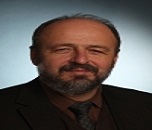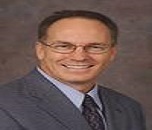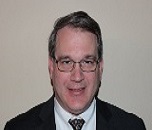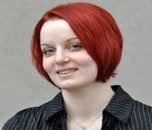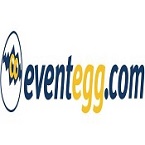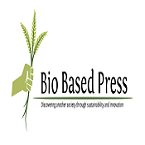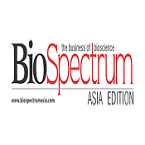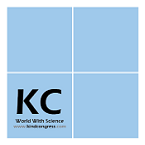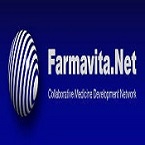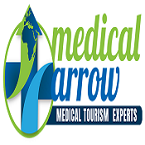Sessions/Tracks
Track 1: Stroke
Stroke arises when an artery supplying blood to the brain either rapidly becomes blocked or instigates to bleed which may effect in part of the brain dying or leading to a sudden impairment that can affect a range of activities such as speaking, movement, thinking and communication.
Associations on Stroke:
The American Stroke Association, North Carolina Stroke Association, National Stroke Foundation Australia, Heart and Stroke Foundation of Canada, European Stroke Initiative, American Academy of Neurology, American Neurological Association, National Institute of Neurological Disorders and Stroke.
Track 2: Neurology, Nursing and Neurological Disorders
Neurology is the enclosure of medical research and practices that devoirs disorders and issues of the nervous system, including the brain. Doctors specialized in diagnosing patients and their problems whereas neurology nurses are one who trained to aid these doctors in the treatment of patients with neurological issues. Neurology nurse deals with giving both post-operative care and immediate care. Various conditions Like Parkinson’s disease, brain tumors, encephalitis, multiple sclerosis and meningitis, as well as those who have suffered from trauma, such as stroke victims and those who have had spinal or brain.
Neurological disorders are the disease that primarily disturbs the neurons of human brain. Neurons don’t reproduce themselves; hence once they get damaged they can’t be more replaced by the body. Huntington’s disease, Alzheimer’s disease, and Parkinson’s disease are the examples of neurological diseases.
-
Neuropharmacology
-
Neurological disorders
-
Neuroplasticity
-
Blood-Brain barrier disruption (BBB)
-
Dementia
-
Behavioural Neurology
-
Care Practise: Neurology and Nursing
-
Brain Nursing
-
Mental Health Nursing
-
Addiction Nursing
Associations on Stroke:
The American Stroke Association, North Carolina Stroke Association, National Stroke Foundation Australia, Heart and Stroke Foundation of Canada, European Stroke Initiative, American Academy of Neurology, American Neurological Association, National Institute of Neurological Disorders and Stroke.
Track 3: Post traumatic stress disorder (PTSD)
A disorder characterised by failure to recover after experiencing or witnessing a terrifying event.
The condition may last months or years, with triggers that can bring back memories of the trauma accompanied by intense emotional and physical reactions.
Symptoms may include nightmares or flashbacks, avoidance of situations that bring back the trauma, heightened reactivity to stimuli, anxiety or depressed mood.
Treatment includes different types of psychotherapy as well as medications to manage symptoms.
People may experience:
-
Self-destructive behaviour or social isolation
-
Fear, severe anxiety or mistrust
-
Loss of interest, loneliness
-
Insomnia or nightmares
-
Emotional detachment or unwanted thoughts
Associations on Stroke:
The American Stroke Association, North Carolina Stroke Association, National Stroke Foundation Australia, Heart and Stroke Foundation of Canada, European Stroke Initiative, American Academy of Neurology, American Neurological Association, National Institute of Neurological Disorders and Stroke.
Track 4: Stroke and Mental Health
A stroke is an emergency of medical aspect that requires early treatment that indicates initial action can minimize brain damage and potential complications. Person affected by stroke reports cognition and/or behavioural problems that comprises problems using languages, vision and perception difficulties and sudden bursts of emotions.
-
Mental Health Counselling
-
Mental Illness and Treatment
-
Mental Health and Rehabilitation
-
Stress Management Programs
-
Assessment of Mental and Behavioural Disorders
-
Mental Health Nursing Practice
Associations on Stroke:
The American Stroke Association, North Carolina Stroke Association, National Stroke Foundation Australia, Heart and Stroke Foundation of Canada, European Stroke Initiative, American Academy of Neurology, American Neurological Association, National Institute of Neurological Disorders and Stroke.
Track 5: Neuropsychiatry and Psychology
Neuropsychiatry is a branch of medicine that agreements with mental disorders attributable to diseases of the nervous system. It headed the current disciplines of psychiatry and neurology, which had mutual training. Nevertheless, neuropsychiatry has developed a growing subspecialty of psychiatry and it is also thoroughly related to the fields of neuropsychology and behavioural neurology.
Psychology is the science of behaviour and mind, counting conscious and unconscious phenomena, as well as feeling and thought. It is an academic discipline of enormous scope and various interests that, when taken together; pursue an understanding of the emergent properties of brains, and all the variety of epiphenomena they manifest. As a social science it intentions to understand individuals and groups by establishing general principles and researching precise cases.
-
Cognitive neuropsychiatry
-
Psychotherapy for neuropsychiatric disorders
-
Psychiatric treatment and supervision
-
Clinical and functional imaging in neuropsychiatry
-
Psychopharmacological treatments
-
Cognitive rehabilitation and behaviour therapy for neuropsychiatric disorders
Associations on Stroke:
The American Stroke Association, North Carolina Stroke Association, National Stroke Foundation Australia, Heart and Stroke Foundation of Canada, European Stroke Initiative, American Academy of Neurology, American Neurological Association, National Institute of Neurological Disorders and Stroke.
Track 6: Stroke & Its Prevention
Stroke happens when the supply of blood to the brain is either hindered or decreased. At the point when this happens, the brain does not get enough oxygen or supplements, which causes brain cell to die. Stroke will probably influence individuals if they are overweight, aged 55 or older, have an individual or family history of stroke, drink vigorously, smoke, or utilize illegal medications.
The most ideal approach to keep a stroke is to address the hidden causes. This is done by living restoratively, which implies having a healthy diet, keeping up a solid weight, exercising frequently, Avoiding liquor or drink moderately.
-
Ischemic stroke
-
Hemorrhagic stroke
-
Transient ischemic attack
-
Causes of Stroke
-
Therapeutics of Stroke
Associations on Stroke:
The American Stroke Association, North Carolina Stroke Association, National Stroke Foundation Australia, Heart and Stroke Foundation of Canada, European Stroke Initiative, American Academy of Neurology, American Neurological Association, National Institute of Neurological Disorders and Stroke.
Track 7: Pediatrics’ Stroke and Recovery
Pediatric stroke is a stroke that happens in children or adolescents. Stroke marks about 6 in 100,000 children. Stroke is a chief cause of death in children in the U.S.
Stroke is diverse in children and new-borns than it is in adults. Children have hemorrhagic strokes as often as they have ischemic strokes, while adults are more likely to have ischemic strokes. Sixty per cent of pediatric strokes happen in boys. Causes of stroke are also different in children than they are in adults.
-
Frequent neurological assessments
-
Occupational Therapists
-
Speech and Language Therapist (SLT)
-
Pediatric Motor Activity Log
-
Pediatric Arm Function Test
-
Functional electrical stimulation
-
Constraint Induced Movement Therapy
-
Repetitive Transcranial Magnetic Stimulation
Associations on Stroke:
The American Stroke Association, North Carolina Stroke Association, National Stroke Foundation Australia, Heart and Stroke Foundation of Canada, European Stroke Initiative, American Academy of Neurology, American Neurological Association, National Institute of Neurological Disorders and Stroke.
Track 8: Neuroscience and Neuroimaging
Neuroscience is that the scientific study of the nervous system. It is an interdisciplinary science that combines and draws on multiple fields, from molecules to medicine. Neuroscience is that the study of how the nervous system develops, its structure, and what it does. Neuroscientists specialise in the brain and its impact on behaviour and cognitive functions. Not only is neuroscience concerned with the normal functioning of the nervous system, but also what happens to the nervous system when people have neurological, psychiatric and neurodevelopmental disorders. Neuroscience is usually mentioned within the plural, as neurosciences.
Neuroimaging is the discipline that deals with the in vivo depiction of anatomy and function of the central nervous system (CNS) in health and disease. Neuroimaging encompasses the varied techniques wont to image the structure of the brain, and it is relevant to some health science disciplines, where it's an excellent impact on the understanding, diagnosis, and treatment of neurological diseases.
Associations on Stroke:
The American Stroke Association, North Carolina Stroke Association, National Stroke Foundation Australia, Heart and Stroke Foundation of Canada, European Stroke Initiative, American Academy of Neurology, American Neurological Association, National Institute of Neurological Disorders and Stroke.
Track 9: Stroke and Cerebral Haemorrhage
A haemorrhagic stroke that happens inside your brain is also called an intracerebral haemorrhage. Symptoms of an ICH can differ from person to person, but they’re almost always present immediately after the stroke occurs.
There are two likely causes of a ruptured blood vessel in the brain. The most mutual cause is an aneurysm. An aneurysm happens when a section of a blood vessel becomes enlarged from chronic and dangerously high blood pressure or when a blood vessel wall is feeble, which is usually congenital. This ballooning hints to thinning of the vessel wall, and ultimately to a rupture.
-
Ischemic stroke
-
Haemorrhage stroke
-
Stroke prognosis
-
Phobias
-
Cerebral hypo perfusion
-
Intracranial haemorrhage
-
Non-invasive brain stimulation
Associations on Stroke:
The American Stroke Association, North Carolina Stroke Association, National Stroke Foundation Australia, Heart and Stroke Foundation of Canada, European Stroke Initiative, American Academy of Neurology, American Neurological Association, National Institute of Neurological Disorders and Stroke.
Track 10: Neuro Cardiology
Neuro cardiology is the study of Interaction between heart and brain. It generally deals with the effect of stress on the heart. The cardiovascular system is under the regulation of the nervous system. An appropriate balance in the hormone levels, kind of life style, environmental conditions play a very important role in maintaining a good relation between heart and brain.
-
Stress
-
Cardiovascular diseases
-
Brain Injury
-
Interactions between heart and brain
-
Heart failure
Associations on Stroke:
The American Stroke Association, North Carolina Stroke Association, National Stroke Foundation Australia, Heart and Stroke Foundation of Canada, European Stroke Initiative, American Academy of Neurology, American Neurological Association, National Institute of Neurological Disorders and Stroke.
Track 11: Central Nervous System Disorders
The central nervous system (CNS) is the part of the nervous system containing of the brain and spinal cord. The central nervous system is so named as it integrates information it takes from, and organizes and influences the activity of, all parts of the bodies of bilaterally symmetric animals
The CNS is contained within the dorsal body cavity, with the brain housed in the cranial cavity and the spinal cord in the spinal canal. In vertebrates, the brain is protected by the skull, whereas the spinal cord is protected by the vertebrae.
-
Addiction
-
Cerebral Edema
-
Functional and structural disorders
-
CNS Neoplasia
-
Spinal Meningitis
-
CNS demyelinating disorders
-
Development of Therapeutics for CNS Disorders
Associations on Stroke:
The American Stroke Association, North Carolina Stroke Association, National Stroke Foundation Australia, Heart and Stroke Foundation of Canada, European Stroke Initiative, American Academy of Neurology, American Neurological Association, National Institute of Neurological Disorders and Stroke.
Track 12: Alzheimer’s and Dementia
Dementia and Alzheimer’s disease aren’t the same. Dementia is an overall term used to describe symptoms that impact memory, performance of daily activities, and communication abilities. Alzheimer’s disease is the most common type of dementia. Alzheimer’s disease gets worse with time and affects memory, language, and thought. Dementia is a syndrome, not a disease. A syndrome is a group of symptoms that doesn’t have a definitive diagnosis. Dementia is a group of symptoms that affects mental cognitive tasks such as memory and reasoning. Dementia is an umbrella term that Alzheimer’s disease can fall under. It can occur due to a variety of conditions, the most common of which is Alzheimer’s disease.
-
Diagnosis of Alzheimer’s Disease
-
Therapeutic advances for Alzheimer’s Disease
-
Prevention of Alzheimer’s disease
-
Lewy body dementia
-
Amyloid and Tau imaging
Associations on Stroke:
The American Stroke Association, North Carolina Stroke Association, National Stroke Foundation Australia, Heart and Stroke Foundation of Canada, European Stroke Initiative, American Academy of Neurology, American Neurological Association, National Institute of Neurological Disorders and Stroke.
Track 13: Neurological Nursing & Clinical Training
Neurological Nursing comprises doctors specialized in diagnosing patients and their problems and neurology nurses are one who trained to aid these doctors in the treatment of patients with neurological subjects. Neurology nurse contracts with giving both post-operative care and immediate care. Clinical training comprises treatment procedures for strokes and many connected disorders and the principal approach of clinical training is to progress neuroprotective treatment methods and establishing modest examination procedures such as motion analysis, MRI (magnetic resonance imaging) and OCT (optical coherence tomography).
-
Therapeutic targets & mechanism for treatment
-
Alzheimer’s disease symptoms
-
Rehabilitation Facilities
-
Skills & Techniques in Clinical training
-
Clinical Evaluation
-
Practices in Clinical training
-
Promoting Clinical Outcomes
Associations on Stroke:
The American Stroke Association, North Carolina Stroke Association, National Stroke Foundation Australia, Heart and Stroke Foundation of Canada, European Stroke Initiative, American Academy of Neurology, American Neurological Association, National Institute of Neurological Disorders and Stroke.
Track 14: Neurosurgery and Neuro Oncology
Neurosurgery is the medical field concerned with the diagnosis and surgery on brain, spinal cord, nervous system. Neurological features include the fundamental headways of neurosurgery coming into result after the profoundly created apparatuses. These include advanced neurosurgical devices or instruments, incorporate etches, curettes, dissectors, distractors, lifts, control devices, snares, suction tubes and robots.
Neuro-Oncology is study of treatment for patients with cancers of the brain and nervous system. There are some of the conditions and symptoms which includes: Acoustic neuroma, Brain metastases, Ependymoma, Astrocytoma, Chordoma, Craniopharyngioma, Glioblastoma multiforme, Glioma, Lymphoma, Meningioma, Medulloblastoma, Oligodendroglioma, Brain tumors, Pineal tumor and Schwannoma.
-
Brain Neurosurgery
-
Spine Neurosurgery
-
Cerebrovascular Surgery
-
Advanced Operative Techniques in Neurosurgery
-
Traumatic Neurosurgery
-
Neuroanesthesia
-
Spine Injury
-
ALS
-
Brain Aneurysm
-
Arteriovenous malformation
-
Dural arteriovenous fistulae
-
Peripheral neuropathy
-
Post-Herpetic neuralgia
Associations on Stroke:
The American Stroke Association, North Carolina Stroke Association, National Stroke Foundation Australia, Heart and Stroke Foundation of Canada, European Stroke Initiative, American Academy of Neurology, American Neurological Association, National Institute of Neurological Disorders and Stroke.
Track 15: Brain Tumors
A brain tumor happens when abnormal cells form within the brain. There are two main types of tumors: cancerous tumours or malignant and benign tumors. Cancerous tumors can be separated into primary tumors that start within the brain, and secondary tumors that have blow-out from elsewhere, known as brain metastasis tumors. All types of brain tumors may yield symptoms that vary liable on the part of the brain involved. These symptoms may comprise headaches, seizures, problems with vision, vomiting, and mental changes. The headache is characteristically worse in the morning and goes away with vomiting. Other symptoms may comprise difficulty walking, speaking, or with sensations. As the disease progresses, unconsciousness may happen.
-
Metastatic tumours
-
Skull metastasis
-
Spinal metastasis
-
Peri-tumoral factors
-
Morphological changes
Associations on Stroke:
The American Stroke Association, North Carolina Stroke Association, National Stroke Foundation Australia, Heart and Stroke Foundation of Canada, European Stroke Initiative, American Academy of Neurology, American Neurological Association, National Institute of Neurological Disorders and Stroke.
Track 16: Therapeutics approaches of Neurological Disorders
Apart from the issue of a cure, sometimes patients with neurological issues can be placed in rehabilitation as part of an effort to restore some lost function. This is usually a hopeful sign, as it’s rare to find a patient assigned to therapy when there’s little to no hope of at least a partial recovery.
-
Migraine & Chronic Pain
-
Neuropathic infections, pain and its therapeutics
-
Neuropathic pain in women’s
-
Functional electrical stimulation
-
Spin cerebellar ataxia
-
Spinal muscular atrophy
-
Advanced neuropathic therapies
Associations on Stroke:
The American Stroke Association, North Carolina Stroke Association, National Stroke Foundation Australia, Heart and Stroke Foundation of Canada, European Stroke Initiative, American Academy of Neurology, American Neurological Association, National Institute of Neurological Disorders and Stroke.
Track 17: Infection & Diagnosis of Stoke
Acute and chronic infectious diseases are considered as risk factors for stroke other than established risk factors. Basically, acute respiratory tract infection and urinary tract infections independently increase the risk of Ischemic stroke. Within three days of infection, the risk for Ischemic stroke is shown to be higher and the risk gradually decreases when time interval between infection and stroke increases.
Stroke patients should be treated at hospital three hours prior to the first symptom. The best methods of diagnosis are Physical examination, Blood tests, CT scan, MRI scan.
-
Clinical Trails and Case Reports
-
Risk of Myocardial infraction
-
Inflammatory Risk Factors
-
Biomarkers in Ischemic Stroke
-
Role of Carotid ultrasound in diagnosis
-
Role of Cerebral angiogram in diagnosis
-
Role of Echocardiogram in diagnosis
Associations on Stroke:
The American Stroke Association, North Carolina Stroke Association, National Stroke Foundation Australia, Heart and Stroke Foundation of Canada, European Stroke Initiative, American Academy of Neurology, American Neurological Association, National Institute of Neurological Disorders and Stroke.
Track 18: Seizure Disorders and Epilepsy
Abnormal electrical activity in the brain can cause seizures. When a person has repeated seizures, this condition is called epilepsy. Diagnosis and treatment of these disorders often requires consultation with a neurologist. Highland Hospital and the specialists at Highland Neurology are available to help if your family members suffer from seizures or epilepsy.
Associations on Stroke:
The American Stroke Association, North Carolina Stroke Association, National Stroke Foundation Australia, Heart and Stroke Foundation of Canada, European Stroke Initiative, American Academy of Neurology, American Neurological Association, National Institute of Neurological Disorders and Stroke.
Track 19: Spine & Spinal Disorders
This Session will include the Neurospinal Disorders finding and therapeutics for patients experiencing all sicknesses of the spine and fringe nerves. For exact analyses and expanded security amid restorative methodology, pros utilize the most excellent procedures accessible for spinal imaging, interventional neuroradiology, electro-physiological testing, and surgery.
-
Spinal Column Anatomy
-
Spine tumours
-
Spinal Stenosis
-
Sciatica
-
Scoliosis Spine
-
Spinal stroke
-
Spinal Cord Repair
-
Therapeutic approaches for spinal disorders
Associations on Stroke:
The American Stroke Association, North Carolina Stroke Association, National Stroke Foundation Australia, Heart and Stroke Foundation of Canada, European Stroke Initiative, American Academy of Neurology, American Neurological Association, National Institute of Neurological Disorders and Stroke.
Track 20: Stroke and its Management
A stroke is a restorative crisis. Strokes occur when blood stream to your mind stops. Inside minutes, cerebrum cells twitch to kick the bucket. There are two sorts of stroke. The more normal kind, called ischemic stroke, is created by a blood coagulation that squares or supplements a vein in the cerebrum. The other kind, called hemorrhagic stroke, is got on by a vein that breaks and seeps into the cerebrum.
-
Movement disorders
-
Amyotrophic lateral sclerosis
-
Prion disease
-
Multiple sclerosis disease
-
Neurodegeneration treatment
-
Acute Stroke Management
-
Interventional Drug Therapy
-
Acute Reperfusion Treatment
Associations on Stroke:
The American Stroke Association, North Carolina Stroke Association, National Stroke Foundation Australia, Heart and Stroke Foundation of Canada, European Stroke Initiative, American Academy of Neurology, American Neurological Association, National Institute of Neurological Disorders and Stroke.
Track 21: Heart Failure and Brain Health
A chronic, progressive condition in which the heart muscle is unable to pump enough blood to meet the body's needs for blood and oxygen is termed as Heart Failure.
The heart pumps 20% of blood to brain and brain receives oxygen through 20% blood. If heart failure happens, the blood supply or oxygen to the brain will be reduced and thereby memory loss happens.
According to the new study, heart failure is directly associated with loss of grey matter in the brain which is associated with memory, reasoning and planning. It has been proven that many heart failure patients had bad long time or immediate memory. If any damages occur in heart or blood vessels, the blood supply to brain will be collapsed.
-
Heart disease and Alzheimer’s disease
-
Hypertension and Alzheimer’s disease
-
Acute Coronary Syndromes
-
Rheumatic heart disease
-
Hypertensive heart disease
-
Cerebrovascular disease
Associations on Stroke:
The American Stroke Association, North Carolina Stroke Association, National Stroke Foundation Australia, Heart and Stroke Foundation of Canada, European Stroke Initiative, American Academy of Neurology, American Neurological Association, National Institute of Neurological Disorders and Stroke.
Track 22: Stroke Rehabilitation & Recovery
Rehabilitation is a significant phase for patients after stroke. The goal is to aid you return to independent living. Rehabilitation program depends on the strictness of stroke and the part of the body affected. Recovery from stroke can be achieved by undergoing therapeutic process, medications and recovery is a part of rehabilitation.
-
Acute Rehabilitation
-
Non-invasive Brain stimulation
-
Skilled Nursing Rehabilitation
-
Outpatient Rehabilitation
-
Long term acute care hospital Rehabilitation
Associations on Stroke:
The American Stroke Association, North Carolina Stroke Association, National Stroke Foundation Australia, Heart and Stroke Foundation of Canada, European Stroke Initiative, American Academy of Neurology, American Neurological Association, National Institute of Neurological Disorders and Stroke.
Track 23: Clinical Trials & Case Reports
Clinical trials and case reports comprises the involvement of larger groups of people testing the effectiveness of a drug or treatment, monitor side effects, liken it to generally used treatments, and collect information that will allow the drug or treatment to be used securely. This track gives investigators knowledge about new technologies, clinical trials and new aspects.
-
Case Reports on Stroke
-
Advances in genetic research
-
Case Reports on Neurodegenerative Disorders
-
History of present illness in affected patients
-
Case reports on Neurosurgery and Neuro Oncology
-
Coping with caring
-
Vaccination by self-antigens
Associations on Stroke:
The American Stroke Association, North Carolina Stroke Association, National Stroke Foundation Australia, Heart and Stroke Foundation of Canada, European Stroke Initiative, American Academy of Neurology, American Neurological Association, National Institute of Neurological Disorders and Stroke.
Track 24: Neuro Diagnosis & Imaging techniques
Neuroimaging or brain imaging is the use of various techniques to either directly or indirectly image the structure, function/pharmacology of the nervous system. It is a comparatively new discipline within medicine, neuroscience, and psychology. Physicians who specify in the performance and interpretation of neuroimaging in the clinical setting are neuroradiologists.
-
Computed Tomography Scan
-
Electroencephalogram
-
Magnetic Resonance Imaging
-
Electromyography
-
Positron Emission tomography
-
Spinal Tap
-
Neurosonography
Associations on Stroke:
The American Stroke Association, North Carolina Stroke Association, National Stroke Foundation Australia, Heart and Stroke Foundation of Canada, European Stroke Initiative, American Academy of Neurology, American Neurological Association, National Institute of Neurological Disorders and Stroke.
Track 25: Cerebrovascular Disorders
Cerebrovascular mentions to blood flow in the brain. Arteries supplying oxygen to the brain are affected and carry about one of a number of cerebrovascular diseases. Most mutual is a stroke or mini-stroke and sometimes can be haemorrhagic stroke. Cerebrovascular diseasescomprise vertebral stenosis, carotid stenosis and aneurysms, intracranial stenosis, and vascular malformations. Restriction in blood flow can be produced by vessel narrowing, clot formation, blockage or blood vessel rupture.
It is projected that about 6 million deaths are due to cerebrovascular disorders. It is the second foremost cause of death in the world and 6th most common cause of disability.
-
Haemorrhage stroke
-
Cerebral Ischemia
-
Vascular malformations
-
Moyamoya disease
-
Arteriovenous malformations
-
Novel therapeutics to treat cerebrovascular diseases
Associations on Stroke:
The American Stroke Association, North Carolina Stroke Association, National Stroke Foundation Australia, Heart and Stroke Foundation of Canada, European Stroke Initiative, American Academy of Neurology, American Neurological Association, National Institute of Neurological Disorders and Stroke.



